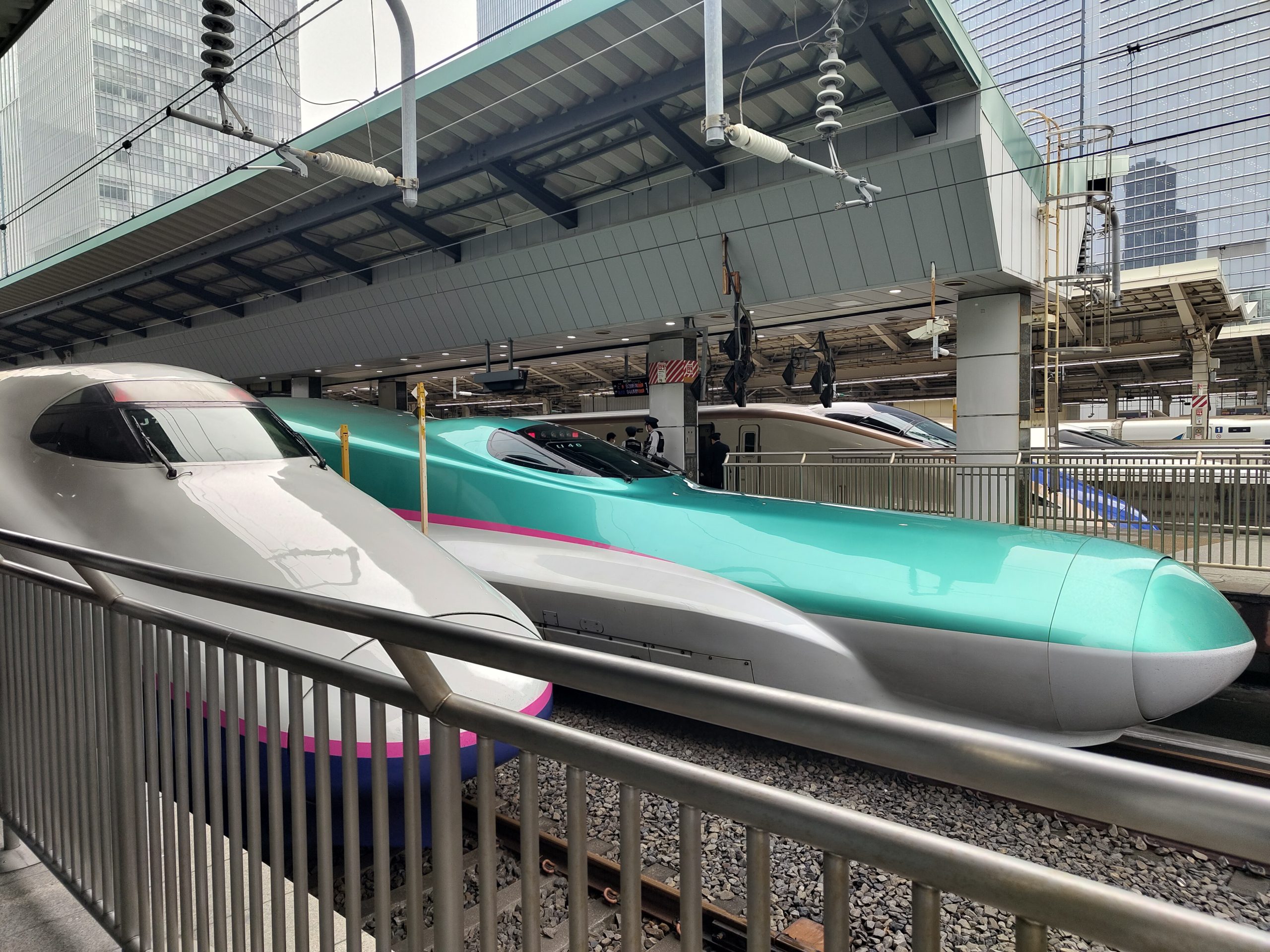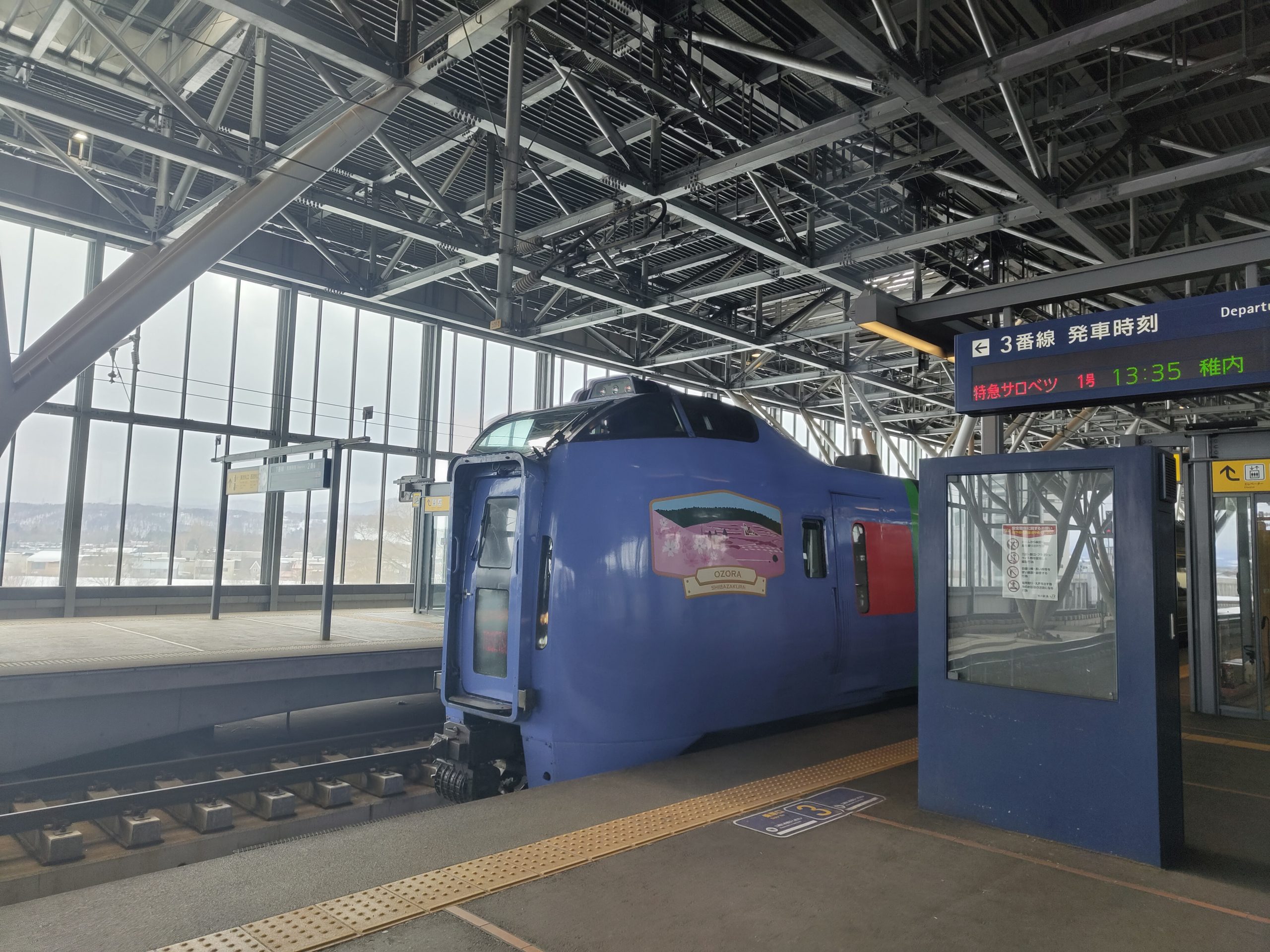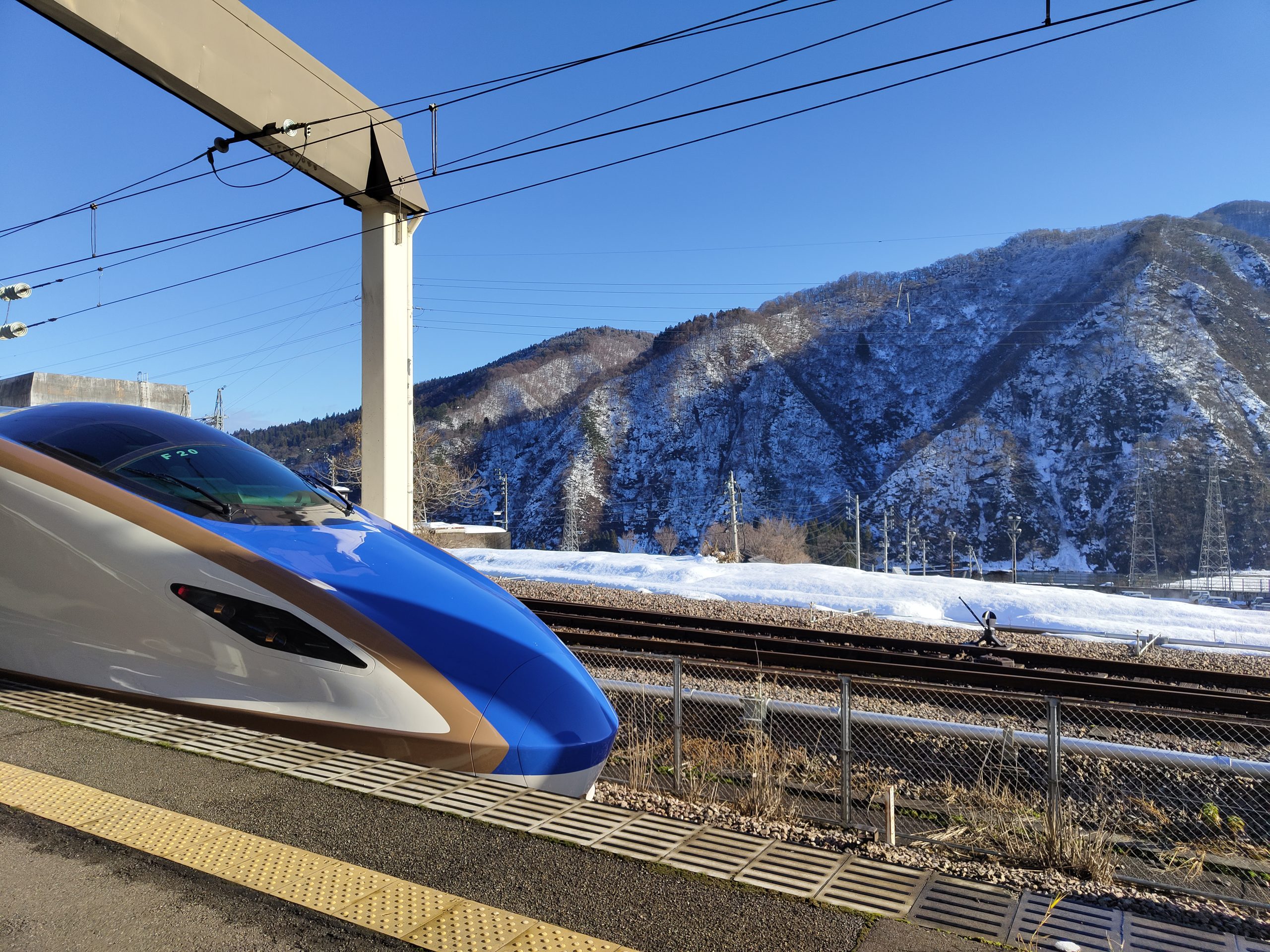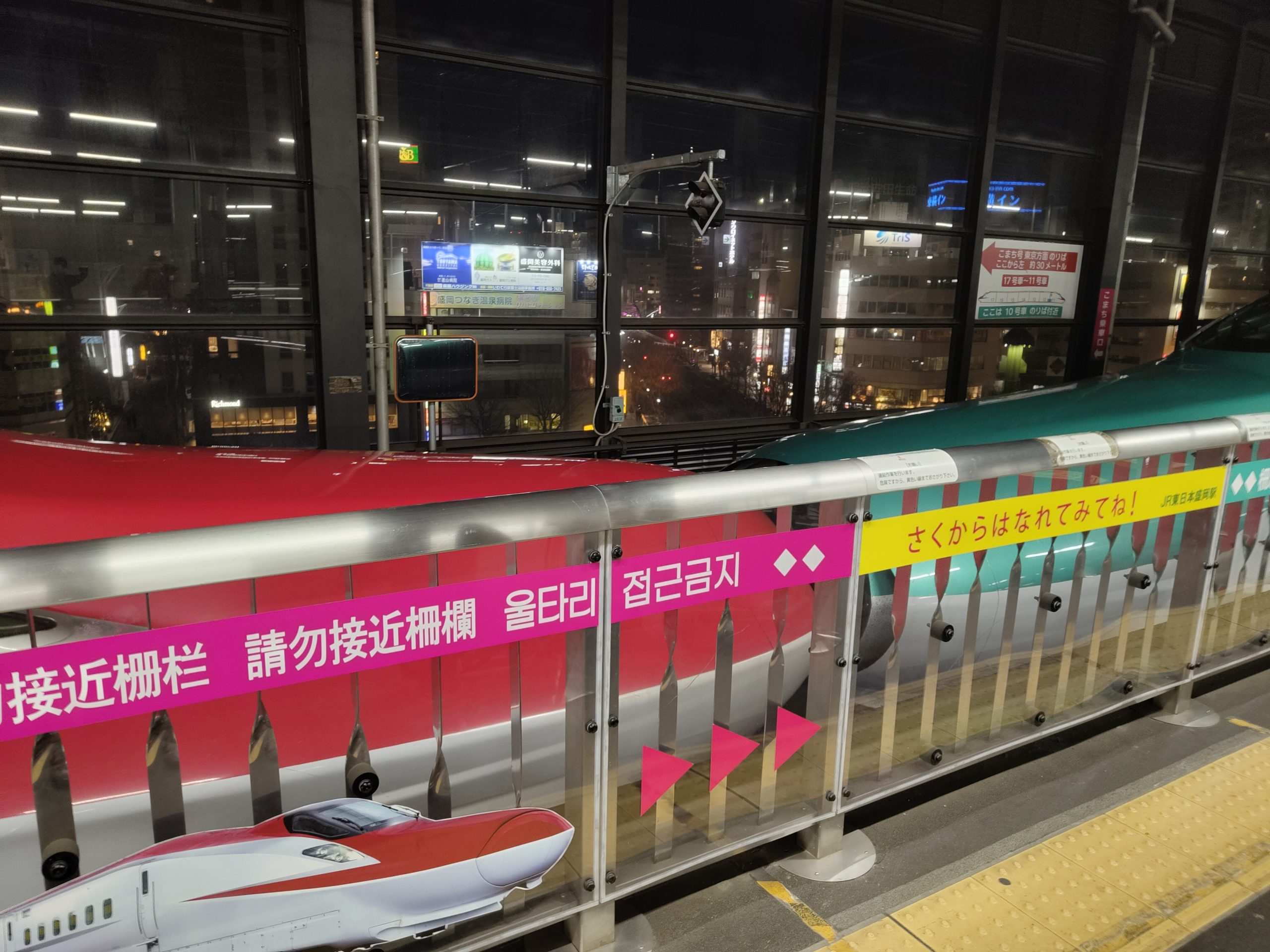JRグループ| JR Group 日本旅客鐵道
列車等級分類
Rail Service Classifications
1 |
簡介
Introduction
在鐵道文化發達的國家,雖然鐵路系統中不同路線規格繁多,可以提供不同速度的服務。但是如果在能夠在同一條線路上提供不同等級的服務,不但能夠給予乘客多種選擇,增加旅途彈性及轉車的便利外,也可以將一條低規格的鐵道發揮最大的效率,減低運輸成本,並將國家的鐵道網帶入城市中。此舉可以避免需要利用道路或地鐵往來鐵路車站,也可以促進公共運輸導向型開發,可持續地發展寶貴的土地資源。優等列車不但允許乘客舒適地往來其他鐵路為骨幹的發展區域,特別具備地方特色的列車帶動當地文化發展。增加公共交通使用率,社會任何階級的人士從而在列車上彼此連結,為和平高效率的社會建立基礎。
在日本,無論在繁華都市的樞紐車站,例如新宿站,或者在光輝年代已過的小市鎮,例如速星站,也能夠透過不同的列車等級迅速抵達國家的其他車站。發達的鐵路網絡,幹線的多重復線建設以及極高效率的營運與時間表促使日本能夠在有限空間與資源下,依舊提供世界領先的服務。雖然新幹線的建設將全國絕大部分的旅程所需時間置於一日,但單靠高速鐵路絕對無法完全發揮鐵路的優勢,所以必須有在來列車的配合才能完善全國的鐵路網絡。新宿站一日處理的乘客人次超越三百六十萬。相比之下,春運高峰時,位於中國上海的所有國鐵車站合計僅一日處理約八十四萬人次,當中最繁忙的虹橋站處理當中約一半的乘客。從此可見,鐵路系統的多樣性,列車的有效分類以及高效率的營運對於鐵路與社會的發展極具影響。
以下文章將會簡單介紹日本旅客鐵路在來線路上的列車等級。雖然日本私有的鐵路也具有相似的分類,唯不同鐵路有對於相同分類有不同的意思,不適宜以偏概全,因此不會在此解釋。新幹線屬於特別的“超級特別急行列車”的等級,將會在未來分開詳細説明。本篇的資訊在二零二五年四月編寫。
In a country where railways culture flourishes, the variety of lines and standards paves the way to operations with a variety of speeds. A rail line that provides multiple levels of services not only gives passengers a variety of choices and flexibility in their travels, it also eases their transfers when one is needed, and maximizes the capacity and comfort of a line built to lower standards, hence reducing the cost to operate transit, allowing railways to be brought into cities and towns alike. These lower standard lines can minimize building stations far from cities centers, necessitating a transfer to road vehicles or metros. Different service levels promotes transit-oriented development and the sustainable development of valuable real estate. Express trains not only give passengers comfort between major transit development areas, but also could play host to local culture and specialties. Increasing public transit utilization connects people in different classes of society, laying the foundation for a harmonious efficient society.
In Japan, from the bustling hub stations such as Shinjuku, to the weaning industries of sunset towns like Hayahoshi, there exists different levels to train services, which makes journeys to and from the remainder of the country convenient. A diverse and resilient rail network, the duplication of rail lines, and highly optimized operations and timetables allows Japan to operate unparalleled services on limited space and infrastructure. Even as the Shinkansen connected the majority of Japanese cities within one day, no rail system can flourish by high speed rail alone, and must be integrated with efficient conventional rail to become a true network. Shinjuku alone handles over 3.6 million passengers per day. In comparison, in the peak of the spring festival migration, national rail stations in Shanghai, China combined only handles 840 thousand passengers per day, of which half was processed by Hongqiao Station. Hence, diversity in rail services, and efficient classification of trains brings enormous impact to the rails and society as a whole.
This article will briefly explore the rail service classifications that you may find on JR. Although private railways in Japan utilize similar classifications, different company uses the same classification differently, and hence it is difficult to say anything meaningful in general about them. Shinkansen belong in a special “Super Express” category, which is a topic for another time. The contents of this article is accurate at the time of writing in 2025 April.
2 |
在來線 與 新幹線
Conventional Rail vs Shinkansens

在東京站等待出發的東日本新幹線列車(從左至右,E2系,E5系,E7系) Shinkansen Trains of the East Japan Railway Company awaiting departure at Tokyo Station (From Left to Right, E2 Series, E5 Series and E7 Series)
頻繁旅客會出現的誤解就是什麼計算為新幹線,什麼是在來線。簡單來説,新幹線就是以新幹線標準建設,新幹線列車營運的列車。在來線(意譯既有線),相比之下就是所有並非新幹線的列車與線路。主要區別就是新幹線利用一千四百三十五毫米標準軌距(指的是兩條鐵軌之間的空間距離)有條件高速運行的基建,因此符合高速鐵路的國際標準。在來線普遍使用一千零六十七毫米窄軌。要注意的是,新幹線可以分開指線路,列車以及服務。
新幹線線路狹義上指的是新函館—東京的東北北海道新幹線,新潟—大宮的上越新幹線,敦賀—高崎的北陸新幹線,東京—鹿兒島中央的東海道山陽九州新幹線,以及武雄温泉—長崎的西九州新幹線。所有其他線路通通歸類在來線。
A common misconception that tourists make is what is considered a Shinkansen, and what would be conventional railways. To put it simply, Shinkansen is the network that consists of Shinkansen standard infrastructure and Shinkansen trains operating Shinkansen services. Conventional rail would be anything other than that. The main difference would be that Shinkansen uses 1435mm standard gauge capable of high speed operation by international standards, whereas the majority of conventional lines uses 1067mm rails. Do note that Shinkansen could separately refer to rail, tracks and services.
Shinkansen lines empirically refers to the Tohoku-Hokkaido Shinkansen between Tokyo and Shin-Hakodate, Joetsu Shinkansen between Omiya and Niigata, Hokuriku Shinkasen between Tsuruga and Takasaki, Tokaido-Sanyo-Kyushu Shinkansen between Tokyo and Kagoshima-Chuo and the Nishi-Kyushu Shinkansen between Takeo-Onsen and Nagasaki. Everything else would be Conventional rail.
經常導致誤會的在來線列車無非是特急列車,在日本較為獨特。雖然特急的速度並非比普通列車有明顯優勢,兩者受限與在來線路的急彎以及平交道時速一百三十公里的法律條文,但靠減少停站縮短旅行時間(或某知名鐵路人士會稱車票效益最低化)以及低密度舒適的乘車環境,帶來與新幹線大同小異的旅行舒適與便利。嚴格來説,新幹線也屬於特急,唯因系統上有明顯區別,所以甚少會一起稱為特急列車。唯新幹線與特急一般會掛上綠色車廂,有指定席可供預約,並且會收取特急費用,兩者也不屬於青春十八票卷適用範圍,因此容易造成混淆。
The train that causes the most confusion undoubtedly is the Limited Express, which is relatively unique to Japan. Although the Limited Expresses are not significantly faster than a Local Train, both limited to 130kmh due to level crossings by law, but through limiting stops and improving comfort, creates a experience comparable to the Shinkansen. Technically, Shinkansen are a subset of Limited Express, but because they operate independently, it is disingenuous to refer them together as such. Although, Shinkansen and Limited Express both often have Green cars and Reserved Seats, and charge a surcharge for boarding, and neither are valid for holders of the Seishun 18 ticket, which could explain much of the confusion.

正在離開旭川站的北海道旅客鐵路特急大雪號キハ二八三系柴油動車組 A KiHa 283 Diesel Mulitple unit of the Hokkaido Railway Company leaving Asahikawa Station on a Limited Express Taisetsu Service
3 |
列車等級一覽
Overview of Service Classifications
普通
Local
普通列車,或叫各站停車列車,是鐵路系統中承載著日常通勤客流的主力列車等級。顧名思義,列車會在所有沿途車站停站。在客流比較小的線路,列車只會有司機一人,同時需要處理在無人車站的票務。其實,普通列車並不等於不舒適,鄉郊的普通列車不時配置有縱向座席以及此所,唯獨因為車速較低,可能避震效果略差。在某些繁忙線路,絕大部分列車均為普通列車,營運時近似地鐵頻繁,例如山手線以及大阪環状線,但絕對不要排除有貨物或優等列車出現的可能性。乘坐普通列車時,必須留意列車的目的地,同一月台的車經常會開往不同的目的地或方向,或者在中途脱鉤,一不小心,可能需要等數小時。
Local Trains, also known as All Stops, are the mainstay of any railway systems, handling the bulk of the commuter passenger flow. As the name suggests, the train would stop at each and every station along the route. In lines with less passengers, there may only be a driver on the train, who has to handle ticketing for passengers leaving at unmanned stations as well. Actually, Local trains could be quite comfortable, oftentimes having toilet and tables, but the suspension may be worse. In some routes like Yamanote Line and Osaka Loop Line, operations mimic metro systems, but never rule out the possibility of cargo and express trains. Always pay attention to the destination board of the train, or risk heading the wrong way as trains may depart for different destination from the same platform or decouple midway.

正在離開坂出站的四國旅客鐵路七一零零系電力動車組 A 7200 Series electrical multiple unit owned by Shikoku Station departing Sakaide Station
快速
Rapid

一個在高松站顯示有關海洋快速列車的乘客資訊顯示屏 A Passenger Information Display displaying information about a Marine Liner train at Takamatsu Station
快速列車可能是日本與旅客最受歡迎的列車等級。即便無需額外附加費用,依然為旅程加速。快速列車與普通列車大同小異,唯獨快速列車會飛過指定車站,大大提升旅途平均速度。經常快速列車擔負近距離大型都市之間的主要交通,以廉價便利作為招徠,提升競爭力。例如京都與大阪之間的新快速以及高松與岡山之間的海洋快速,並歸類為快速列車,兩者停站極小,速度媲美特急列車,班次也多不勝數,兩者也提供額外收費的指定席服務。值得注意的是,快速的定義視乎列車是否略過線上的車站,平行路線的普通服務可能站距比較大而比快速快,例如,即便兩線在東京到橫濱區間完全平行,市區的京濱東北線的快速列車會比近郊的東海道線的普通列車停站多。
Rapid Trains may the most popular among tourist and locals alike. It can greatly hasten a journey without breaking the bank. Rapid Trains are similar to Local but may skip certain stops, making it the popular choice between urban areas. Being cheap and rapid, it becomes a very competitive service against competitive routes. For example, the Special Rapid between Kyoto and Osaka, and the Marine Liner between Takamatsu and Okayama are Rapid Trains, with extremely few stops and journey times that matches or beats Limited Express trains, and unparalleled frequency and seat reservations for a fee. It’s worth noting that the definition of a Rapid service depends on if stops are skipped on the line, which may lead to situations like the Local trains on the Suburban Tokaido Line being quicker than the Rapid trains on the Urban Keihin-Tohoku Line.
急行與特急
Express and Limited Express
急行以及特別急行列車屬於需要額外收費的優等列車,除了需要基本乘車卷外,需要額外附加一張急行卷。兩者屬於在來線路上的最高等級列車,唯急行列車基本上是名存實亡。特急列車上的配置於新幹線類似,以停站少來壓縮旅途所需的時間,主要聯繫新幹線無法覆蓋的範圍,或者輔助新幹線接駁乘客前往沿途略過的車站。
擁有著舒適的環境以及充足的時間,持有周遊卷的乘客不該忽略特急列車為旅行中途休息的地方,能夠重新整理自己再出發的不錯選擇。
Express and Limited Express trains belongs to the class of premium trains that require a surcharge ticket on top of the basic fare ticket, and are the highest priority on the conventional rail. Although Express trains no longer truly exist, Limited Express offers Shinkansen like interiors with shorter journey times thanks to a limited stopping pattern, and is mainly used to get to places not covered by Shinkansen.
Tourists the a rail pass should not overlook the Limited Express as a prime resting stop in the midst of the trip for it’s comfort, to sit back and relax and figure out where to go next.

停於青森站的津輕號E751系電力動車組 A terminating E751 Electrical Multiple Unit operated on the Limited Express Tsugaru at Aomori Station
| 等級 Classification | 停站 Stops | 特急車費 Express Surcharge | 指定席 Seat Reservations | 綠色車廂 Green Car |
|---|---|---|---|---|
| 普通 Local | 各站停車 All Stops | 沒有 None | 沒有 None | 有些 Some Services |
| 快速 Rapid | 少量停車 Few Stops | 沒有 None | 有些 Some Services | 有些 Some Services |
| 急行 Express | 有限停車 Limited | 有 Surcharge | 有 Reserved | 有些 Some Services |
| 特急 Limited Express | 有限停車 Limited | 有 Surcharge | 有 Reserved | 有些 Some Services |
4 |
迷妳新幹線 與 新幹線支線
Mini Shinkansens and Shinkansen Branch Lines

在湯澤支線的ガーラ湯澤站的東日本新幹線E7列車 An East Japan Railway Company E7 at the plaform of Gala Yuzawa Station of the Gala Yuzawa Branch Line
上文提及,新幹線的線路,列車與服務需要分開考慮。因為在日本,新幹線列車絕對可以出現在狹義新幹線網絡外的線路。左圖就是一個例子,在冬季,湯澤支線上的列車將開放,允許上越新幹線列車直接從東京行駛往滑雪場。雖然湯澤支線建設為新幹線標準,並且所有列車均為新幹線列車,但線路被歸類成在來線。因此,當新幹線列車行駛在此線路上,將被歸類成特急列車,並使用特急車費計算。沒錯!列車的等級是可以中途更改的。除了湯澤支線外,博多南線也類似地利用新幹線列車與標準運行一條在來鐵道,但收費就有特別條文涵蓋,因此情況比較特殊。
As mentioned above, Shinkansen lines, trains and services should be separately classified. Because in Japan, the Shinkansen can appear outside of the empirical Shinkansen network. In the winter, the Yuzawa Branch Line is open for trains from the Joetsu Shinkansen to directly connect passengers between Tokyo and Gala Yuzawa Ski resort. Although the Yuzawa Branch Line uses Shinkansen standards and trains, it is classified as a conventional rail line. consequentially, all Shinkansen trains are classed as Limited Expresses when operating on this line. Indeed! Trains can be re-classed mid journey. Apart from the Yuzawa Branch Line, the Hakataminami Line also have a similar situation, with special fares too.
旅客比較熟悉的迷妳新幹線也處於類似的情境,列車當從東京行駛到運載山形新幹線服務的奧羽本線福島站,以及秋田新幹線田澤湖線的盛岡站後,專用的動車組會與東北新幹線列車分離並且改為特急列車繼續前往新莊以及秋田。與剛才提及的支線的差別是,奧羽本線以及田澤湖線本身有普通列車運行,並非全由新幹線服務。為了配合與新幹線共線,兩條線的線路以及列車改用新幹線的軌距以及電力系統,唯路線與月台並沒有被更改,因此必須使用專用的列車才可安全在線路行駛,車速也被線路上的平交道首先
A more familiar case for most tourist would be the mini-Shinkansens, when trains arrived at Fukushima station, where the Yamagata Shinkansen turns onto the Ou Main Line, or Morioka station, where the Akita Shinkansen turns onto the Tanzawo Line, the special train set would detach from the rest of the Tohoku Shinkansen Train set to head to Shinjo and Akita respectively. The difference between this and our aforementioned branch lines are that local trains runs on the mini-Shinkansen lines. To accommodate the Shinkansen, infrastructure and trains of the two lines have their gauge and electrification changes. However, as the alignment and platforms remains intact, the speed continues to be limited by level crossings by law, and journeys must be completed by dedicated rolling stock.

在盛岡站重聯的E6秋天新幹線列車以及E5東北北海道新幹線列車 A E6 Akita Shinkansen train set coupled with a E5 Tohoku-Hokkaido Shinkansen train set at Morioka station
Leave a Reply